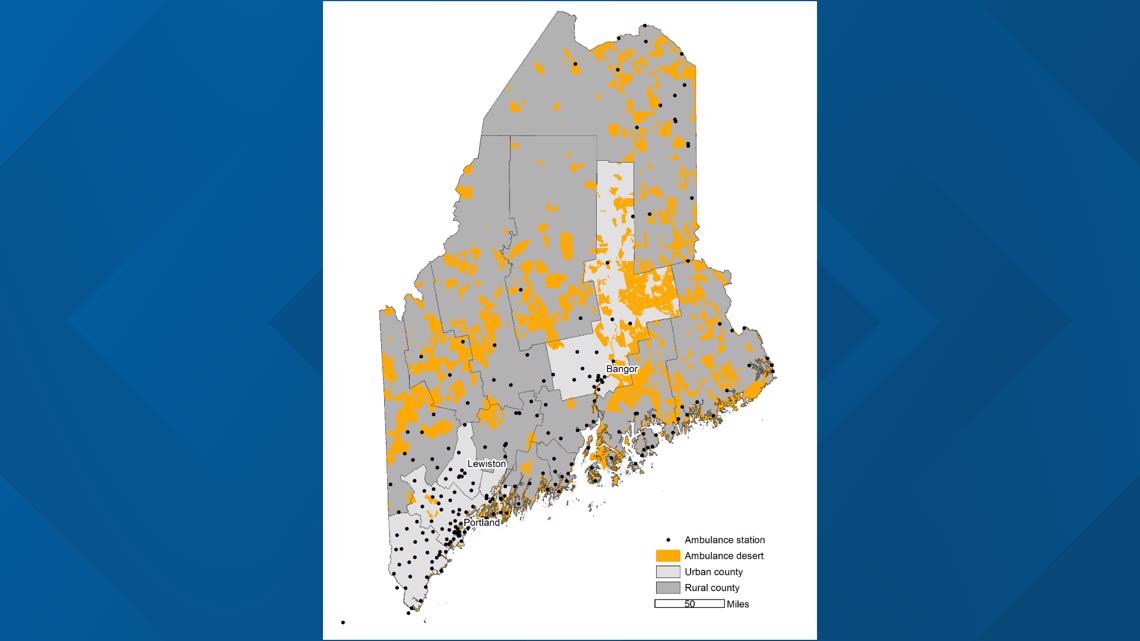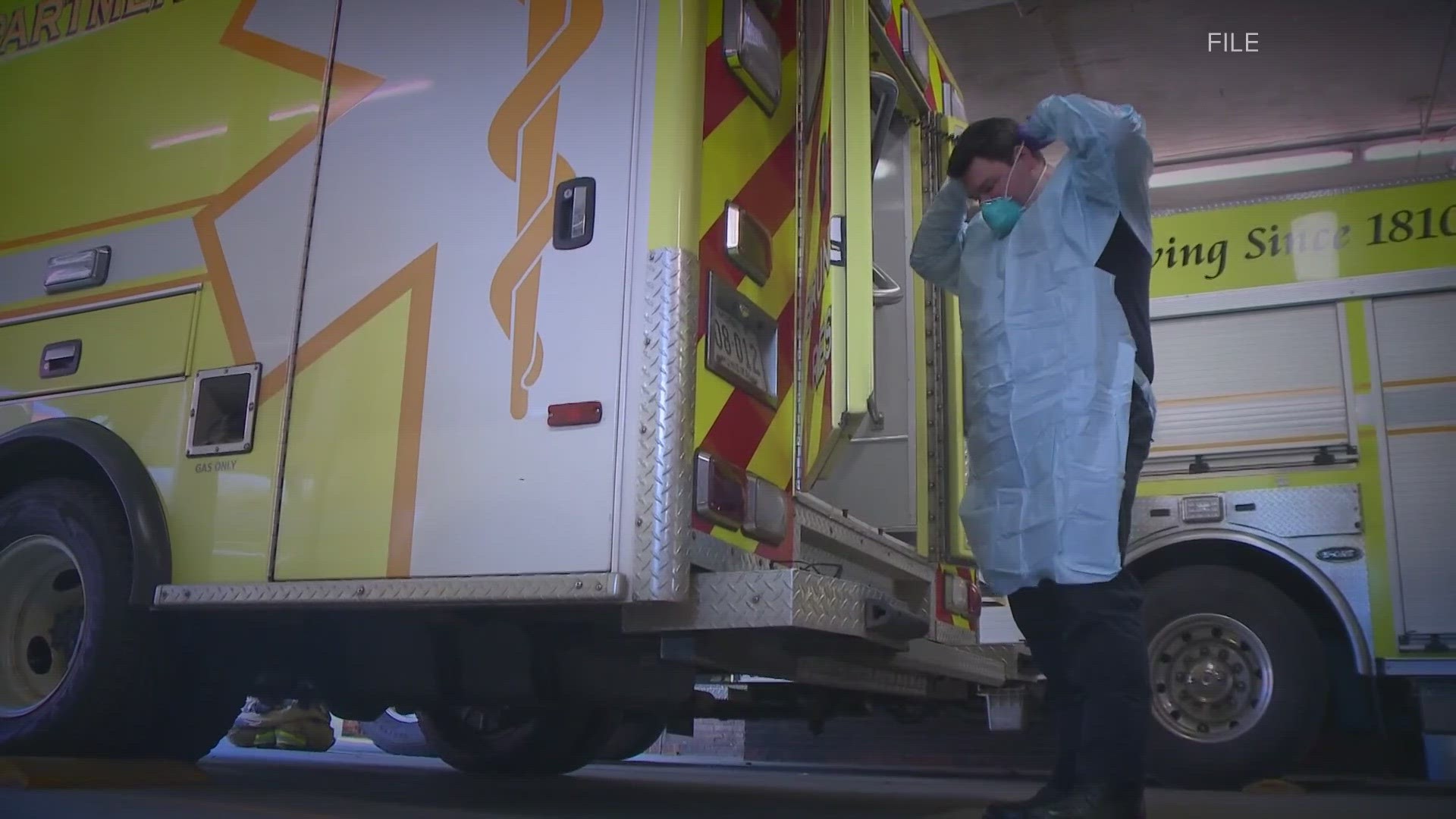MAINE, USA — When you dial 911 in an emergency, you want to know someone will arrive at your doorstep quickly.
New research from the University of Southern Maine shows help may be coming, but for some Mainers, it could take more than 25 minutes for it to arrive.
The research found six percent of Maine's total population, or 82,000 Mainers, live in ambulance deserts: at least 25 minutes away from the closest ambulance station.
Maine has 215 ambulance stations, according to the research. Two-thirds of people residing in ambulance deserts reportedly live in rural counties.


"You're more likely to die if you have a cardiac arrest if you live in an ambulance desert. You just won't get to a health facility in time," Yvonne Jonk, Maine Rural Health Research Center's Deputy Director and faculty member at USM, said.
Response times are critical when it comes to serious calls.
"We're used to it. It's all we've ever known. That's why rural EMTs are cut from a different cloth," Renee Gray, Service Chief at Moosabec Ambulance Service in Jonesport and advanced EMT, said.
EMTs in Jonesport need to keep patients alive for the 30-minute drive to the nearest hospital. Gray said it usually takes about 15 minutes for first responders to get to a call, and it could be up to an hour before the patient reaches the hospital.
Jonk says she's hoping this research will get the attention of state leaders to see the need for more assistance in the state's EMS system, especially for rural providers. She's hopeful these findings, paired with what lawmakers already know about the state's EMS shortfalls, will help create a regionalized system so there's better coordination between separate EMS providers.
"We're able to let people know that area of the state does not have good coverage and you need to be careful because if something does go south, you need to figure out a plan B," Jonk said.

